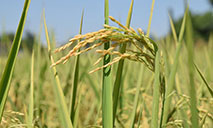ADB trims developing Asia 2021 growth outlook to 7.1 pct amid lingering COVID-19 concerns
MANILA, Sept. 22 (Xinhua) -- The Asian Development Bank (ADB) lowered its 2021 economic growth outlook for developing Asia as the region grapples with COVID-19 pandemic fueled by the more virulent Delta variant and uneven progress on vaccination, according to an update to Asian Development Outlook (ADO) released on Wednesday.
The report, ADB's widely followed economic publication, forecasts developing Asia to grow by 7.1 percent this year, lower than the 7.3 percent projection in April. The growth outlook for 2022 is raised to 5.4 percent from 5.3 percent, supported by a broad recovery in exports.
The report says the COVID-19 variants, renewed local outbreaks, the reinstatement of various levels of restrictions and lockdowns and slow and uneven vaccine rollouts are weighing down the region's prospects.
However, growth in China, the region's largest economy, will remain robust at 8.1 percent in 2021 and 5.5 percent in 2022, as a solid export performance and higher fiscal support in the second half of 2021 keep growth on track.
"Growth in China will remain strong," the report says, adding that the gradual recovery in consumption is expected to continue, buttressed by improvements in the job market and consumer confidence.
The report says that net exports and investment contribute to China's growth, supported by healthy trade dynamics.
"Developing Asia remains vulnerable to the COVID-19 pandemic, as new variants spark outbreaks, leading to renewed restrictions on mobility in some economies," ADB Acting Chief Economist Joseph Zveglich, Jr. said in an online press conference.
"Policy measures should not only focus on containment and vaccination but also continuing support to firms and households and reorienting sectors in the economy to adapt to a 'new normal' once the pandemic subsides to kick-start the recovery," he added.
Zveglich said a resurgence in the COVID-19 pandemic, possibly due to new virus variants and slow progress on vaccination, "remains the main risk."
According to the report, the COVID-19 cases in developing Asia have risen since the Delta variant emerged in April. Meanwhile, vaccination progress in developing Asia remains uneven and lags behind advanced economies.
As of August 31, the report says 28.7 percent of the region's population had full vaccine protection, far behind the coverage in the United States and the European Union.
East Asia's growth forecast for this year has been raised to 7.6 percent from 7.4 percent in April, as a surge in global demand fuels exports from the region. East Asia's growth prospects for 2022 are unchanged at 5.1 percent.
The Southeast Asia's growth projections for 2021 and 2022 have been lowered to 3.1 percent and 5.0 percent, respectively, from 4.4 percent and 5.1 percent in April. The Pacific's economy is set to contract 0.6 percent this year, compared with 1.4 percent growth projected in April, before expanding 4.8 percent in 2022.
The report also forecasts South Asia to grow by 8.8 percent this year, compared with the 9.5 percent forecast in April for the sub-region.
However, the report says that the outlook for 2022 has improved to 7.0 percent from 6.6 percent. The projection for India, South Asia's largest economy, is downgraded to 10.0 percent from 11.0 percent in 2021, while the outlook for next year has improved to 7.5 percent from 7.0 percent.
This year, the economic growth outlook for Central Asian economies is raised to 4.1 percent from 3.4 percent projected in April. The subregion's 2022 outlook has improved to 4.2 percent from 4.0 percent.
The inflation in developing Asia is expected to remain in check, at 2.2 percent this year and 2.7 percent in 2022. The current trend of higher international commodity and food prices could stoke inflation in some of the region's economies, the report said.
Photos
 Bumper harvest presents a magnificent scene of terraced rice paddies in SW China's Luzhou city
Bumper harvest presents a magnificent scene of terraced rice paddies in SW China's Luzhou city In pics: life of Siberian tigers in NE China's breeding center
In pics: life of Siberian tigers in NE China's breeding center Explore wonderland created by an alpine lake cluster in SW China's Yunnan
Explore wonderland created by an alpine lake cluster in SW China's Yunnan In pics: Museums across China unveil creative and culturally-inspired mooncakes
In pics: Museums across China unveil creative and culturally-inspired mooncakes
Related Stories
- Chinese mainland reports 16 new locally transmitted COVID-19 cases
- U.S. COVID-19 deaths top 1918 flu estimates as vaccine, mask battles continue
- China sends working group to NE city to guide COVID-19 response
- Medical workers company with child patients of COVID-19 during Mid-autumn festival in Putian, SE China's Fujian
- China's Harbin tightens curbs after new local COVID-19 infection
Copyright © 2021 People's Daily Online. All Rights Reserved.






